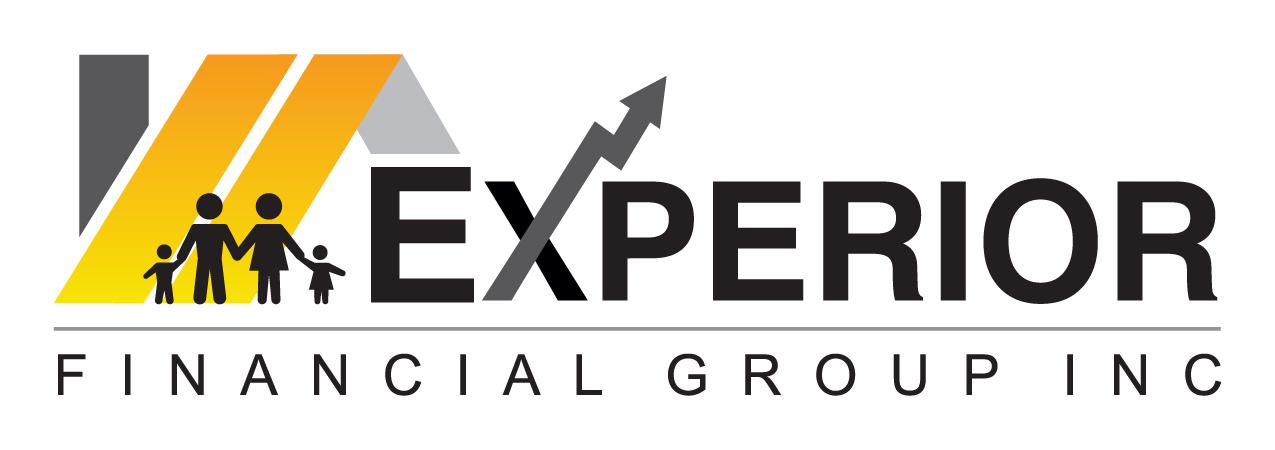FAQs for Life Insurance

1. Do I really need life insurance if I’m young and healthy?
Yes. Life insurance is most aAordable when you’re young and healthy. It protects your family from
unexpected financial burdens and helps lock in low rates for the future.
2. What is the diAerence between term life and whole life insurance?
Term life provides coverage for a specific period (e.g., 10, 20, or 30 years), while whole life oAers
lifelong coverage with a cash value that grows over time.
3. Can I name anyone as my beneficiary?
Yes. You can name a spouse, child, parent, or anyone else. It’s important to choose someone you
trust and to review your choice regularly.
4. Are life insurance payouts taxable in Canada?
No. In most cases, life insurance death benefits are paid tax-free to your beneficiary, making it a
powerful financial tool for estate planning.
5. Can I make changes to my policy later?
Yes. Depending on your policy type, you may be able to increase coverage, change beneficiaries, or
convert from term to permanent coverage.
FAQs for Critical Illness Insurance

1. What is Critical Illness Insurance and how does it work?
Critical Illness Insurance provides a lump-sum payment if you are diagnosed with a covered serious
illness like cancer, heart attack, or stroke. You can use the money however you need for treatment,
bills, or recovery time.
2. Which illnesses are typically covered?
Most policies cover 24–26 major conditions, including cancer, heart attack, stroke, multiple
sclerosis, kidney failure, organ transplant, and more. Some plans oAer partial payouts for early
stage illnesses.
3. Is Critical Illness Insurance the same as Disability Insurance?
No. Disability Insurance replaces a portion of your income if you’re unable to work, while Critical
Illness Insurance pays a lump sum upon diagnosis, regardless of your ability to work.
4. Do I need Critical Illness Insurance if I have government health coverage?
Yes. Public healthcare covers basic medical treatment, but it doesn’t pay for lost income, home
modifications, travel for treatment, or private care which can add up quickly.
5. How much Critical Illness coverage should I get?
It depends on your income, lifestyle, debt, and how long you’d need financial support during
recovery. Many Canadians choose $50,000–$100,000 of coverage, but your needs may vary.
FAQs for Disability Insurance

1. What is Disability Insurance and how does it protect me?
Disability Insurance replaces a portion of your income if an illness or injury prevents you from
working. It helps you maintain financial stability while you recover.
2. How much of my income is covered by Disability Insurance?
Typically, Disability Insurance covers 60–85% of your pre-disability income, depending on the policy
and provider.
3. What’s the difference between short-term and long-term disability insurance?
Short-term disability covers income loss for a few weeks to several months. Long-term disability
kicks in after the waiting period and can last for years or until retirement age.
4. Who needs Disability Insurance if we have public healthcare?
Even with public healthcare, it doesn’t replace your income. Disability Insurance is essential for
anyone relying on their job income to pay for rent, bills, and daily expenses.
5. Can self-employed individuals get Disability Insurance?
Yes. There are individual disability policies designed specifically for self-employed people, ensuring
income protection even without an employer-sponsored plan.
FAQs for Travel and Student Insurance

1. Why do visitors and international students need health insurance in Canada?
Canada does not provide free healthcare for visitors or most international students. Without private
insurance, you may face high medical costs in case of illness or emergency.
2. What does a typical health insurance plan cover for visitors or students?
Most plans cover doctor visits, emergency hospital care, prescription drugs, diagnostic tests,
ambulance services, and sometimes dental emergencies, depending on the policy.
3. How much does travel or student health insurance cost?
It varies by age, coverage amount, and length of stay. On average, student plans range from $500
$900/year and visitor plans can be $2–$10 per day.
4. When should I buy health insurance before or after arriving in Canada?
It’s best to buy it before you arrive. Some insurance plans must be purchased within a few days of
landing to be valid. Delays can leave you uncovered.
5. Can I extend, change, or cancel my insurance?
Yes. Most insurance providers allow you to extend coverage if your stay is prolonged or cancel the
policy if you leave Canada early or qualify for provincial health insurance. In some cases, partial
refunds are available even if claims have been made, depending on the insurer’s terms and the
amount used.
FAQs for Health and Dental Insurance

1. Why do I need private health and dental insurance in Canada?
While provincial health plans cover basic medical services, they usually don’t cover dental care,
prescription drugs, vision care, or paramedical services which private insurance can provide.
2. What services are typically covered by health and dental insurance?
Coverage often includes routine dental exams and cleanings, fillings, prescription drugs, vision
care, massage therapy, physiotherapy, chiropractor, mental health services, and more depending
on the plan.
3. How much does private health and dental insurance cost?
Premiums vary based on your age, coverage level, and whether you’re applying individually or as a
family. Basic plans can start at $50/month and go higher with more coverage.
4. Can I get health and dental insurance if I have pre-existing conditions?
Yes, but coverage for pre-existing conditions may be limited or excluded, depending on the insurer
and plan type. Some plans oAer partial or delayed coverage.
5. Is it better to get an individual plan or a family plan?
If you have dependents, a family plan is often more cost-eAective than separate individual policies.
It simplifies management and typically provides better value for households.
FAQs for Hospitalization Insurance (Income Replacement)

1. What is hospitalization income insurance and how does it work?
It’s a type of insurance that pays you daily or lump-sum cash benefits if you’re hospitalized or
undergo surgery, even for outpatient procedures, due to illness or accident.
2. Who can benefit from this insurance?
Anyone who wants extra financial protection during recovery can benefit, especially self-employed
individuals, gig workers, or those without full employer benefits.
3. What types of hospitalizations or surgeries are covered?
Most plans cover hospital stays, emergency room visits, and medically necessary surgeries
including day surgeries, whether due to illness or accidental injury.
4. Can I receive benefits even if I already have provincial health insurance?
Yes. This coverage is designed to supplement government health plans by giving you cash directly,
which you can use for lost income, childcare, travel, or any other expense.
5. How much does it pay, and for how long?
Depending on your plan, you may receive a daily benefit of $100 to $400, plus additional lump-sum
amounts for specific hospital-related procedures and services, even for outpatient surgeries or
treatments performed at a hospital, clinic or doctor’s office.
FAQs for Debt Management

1. What is debt management and how can it help me?
Debt management involves reviewing your financial situation and creating a customized plan to
help reduce or eliminate your unsecured debts, often with lower monthly payments and no interest.
2. What types of debts are eligible for this program?
Typically, unsecured debts such as credit cards, personal loans, payday loans, and overdue utility
bills can be included in a debt management program.
3. Will this affect my credit score?
Yes, your credit score may be temporarily aAected. However, successfully completing the program
can help you rebuild your credit faster than continuing to struggle with unpaid debts.
4. How much of my debt can be reduced?
In many cases, up to 80% of your unsecured debt can be forgiven or negotiated down, with the
remaining balance repaid over several years, with no interest and through one manageable monthly
payment.
5. Do I need to be bankrupt to qualify for debt management?
No. Debt management is an alternative to bankruptcy. It’s designed to help individuals regain
control of their finances without the severe consequences of filing for bankruptcy.
FAQs for Group Plan Insurance

1. What is a Group Insurance Plan?
A Group Insurance Plan is a coverage package oAered by employers or organizations to provide
health, dental, life, and disability benefits to their employees or members at discounted group
rates.
2. Who is eligible for Group Insurance?
Typically, full-time and part-time employees, as well as their dependents (spouses and children),
are eligible to enroll in the group insurance plan.
3. What types of coverage are included in a typical Group Plan?
Common coverages include life insurance, health and dental benefits, disability income protection,
and sometimes critical illness insurance.
4. How does Group Insurance diAer from individual insurance?
Group insurance generally oAers lower premiums and fewer medical underwriting requirements
compared to individual policies, making it more accessible and aAordable.
5. Can I keep my Group Insurance if I leave my job?
In most cases, group insurance ends when you leave your employer. However, some plans offer
options to convert your coverage to an individual plan. Alternatively, if you start working with
another employer shortly after leaving and that employer already has a similar group insurance
contract in place you may be able to transfer your coverage.
FAQs About Investment

1. How do I choose the right investment vehicle?
A licensed advisor can assess your financial situation, explain the pros and cons of each option,
and help you select products aligned with your goals, risk level, and time horizon.
2. What’s the best option for someone new to investing?
That depends on your goals, timeline, and risk tolerance. TFSA is often a great start due to flexibility
and tax-free growth. RESP or FHSA may also apply if relevant.
3. Is investment through insurance tax-advantaged?
Yes, certain insurance-based investments like Whole Life, Universal Life, and Segregated Funds
grow tax-deferred, and some allow tax-free withdrawals or loans if structured correctly.
4. Can I access the money in my Whole Life or UL policy?
Yes, these policies build cash value over time. You can access it via policy loans, withdrawals, or by
reducing your death benefit with potential tax consequences.
5. What’s the difference between RRSP and TFSA?
RRSP helps you reduce taxable income now, but withdrawals are taxed. TFSA contributions aren’t
deductible, but growth and withdrawals are tax-free.
6. What is a Segregated Fund and how does it work?
A Seg Fund is a type of investment oAered by insurance companies that combines market-based
returns with capital guarantees at maturity or death.
7. Can I lose money in a Segregated Fund?
While Segregated Funds carry market risk like mutual funds, they often include maturity and death
benefit guarantees (75% to 100%), which help reduce potential losses.
8. What is the benefit of investing through a Whole Life or UL policy?
These insurance products provide lifelong coverage and build cash value over time, which can be
borrowed against or used in retirement.
9. What is an RESP and how does it work?
It’s a government-supported plan to save for a child’s education. It oAers grants and tax-deferred
growth until funds are withdrawn for qualified education.
10. What is an FHSA and who qualifies?
The First Home Savings Account is a new registered plan that allows first-time homebuyers to save
up to $40,000 tax-free toward a home purchase.
